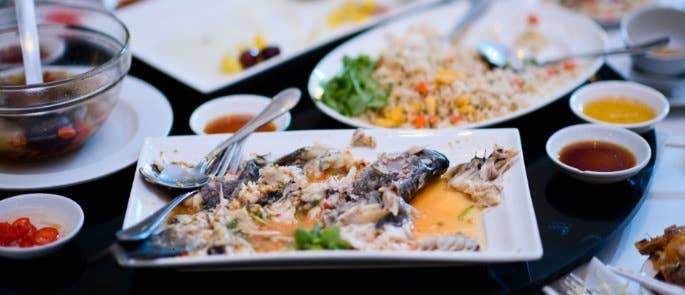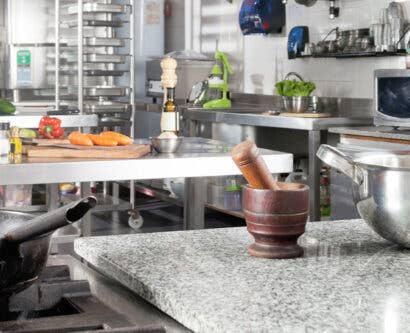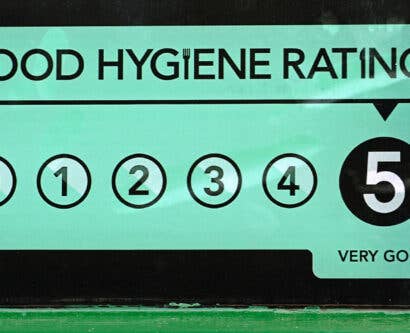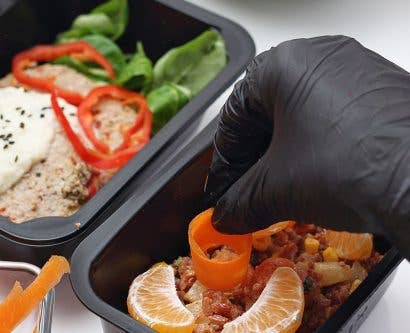Menu Engineering: How to Use it to Increase Profitability
Did you know that by simply having a menu that is designed in a particular way, you can increase your profits by up to 5%? If you are responsible for maximising a business’ profitability, you can use the technique of menu engineering. The process is complex and can take time, but when it’s implemented it can have a significant impact. Here, we explain how you can engage customers and increase profitability through menu engineering.
What is Menu Engineering?
If you work in the hospitality industry it’s likely that you’ll have come across the term menu engineering before. It refers to the process of analysing the performance of every item on a menu. You should consider three key areas, popularity in comparison to similar items, pricing and profit. This should then influence where items are placed on a menu, helping increase profitability per guest.
As well as where items are placed, menu engineering also refers to the overall appearance of a menu. Firstly, it must match the tone of the establishment and, importantly, it must be carefully thought out and designed. Often, this is the first thing customers see when deciding where to eat so you need to leave a lasting impression.
Menu engineering will give you greater insight into the products you sell and where you can increase your profits pertaining to an individual item.
Why Do I Need Menu Engineering?
Menu engineering is a tool that will benefit most establishments within the hospitality industry, particularly restaurants. It can be applied to almost any menu, including those online, drink menus, or a specials board.
The main reason you need menu engineering is to increase your business’ profitability. It allows you to subconsciously encourage customers to purchase what you want them to. And the dishes you’re going to want them to buy are those with the highest profit margin.
You should also focus on calculating the individual cost of menu items. This includes all the ingredients that are required, as well as the costs incurred during the production and serving processes. Menu engineering, then, should form a large part of your cost and profit management.
You should also use this information to optimise an item’s contribution to the overall profit margin of the business. For example, you can use menu engineering to manage waste, therefore saving money as well as reducing the amount of food thrown away. You can do this by calculating the quantity of each product that needs to be prepared every day, based on its popularity.

Using a Menu Engineering Matrix
A menu engineering matrix will help you to recognise which products are good for your business. More importantly, it’ll help you to identify which you need to focus on more. Throughout the process, you need to put all menu items into one of the four menu engineering categories. You can only do so once you have calculated how much of each menu item has sold during a set period, and the profit driven by each. You can then use this data to plot the item within a menu engineering matrix.
A menu engineering matrix is a graph on which you should place each item, based on what you have concluded in terms of popularity and profitability. You can determine popularity by the quantity of the dish sold within a set period, while profitability is the item’s contribution margin. The matrix is split into four categories:
- Dog
- Plow-horse
- Puzzle
- Star
Dog
If a menu item falls within the ‘dog’ category this means it has both low profitability and low popularity. They tend to cost a lot to make, whether that be in terms of labour or ingredients. As well as this, they aren’t very popular with diners. Consider whether you can alter the dishes that fall under this category. If they remain unsuccessful you should either move its location on the menu, or get rid of it as an option entirely.
Plow-horse
Items in this section have low profitability but are popular amongst diners. Although the ingredients used are more expensive, the item sells well so you need to be careful when adjusting the recipe. You may be able to find suitable alternatives that don’t noticeably impact the menu item.
Another option you should consider is portion size. You should have already monitored how much food is wasted, including in terms of each meal. If leftovers from a dish in the ‘plow-horse’ category are frequent, you may want to consider making the portion size smaller. If you decide to take this approach the portion alteration should only be minor, as a noticeable reduction may upset customers who have come to expect a larger portion size.
Puzzle
Puzzle menu items are those that have a high profit, but don’t tend to sell particularly well. You want to try and increase their popularity with consumers. This can be done by listing the food item in a different place on the menu. Research has suggested that diners look to the top right-hand corner of menus for the longest duration. Therefore, it makes sense to position items with a high profit here, particularly if they currently don’t sell well. Over a period of time, you should assess the change in popularity of the item to determine its success based on its new position on the menu.
Star
Star menu items have high profitability and popularity. This means that they are cheap to make and are very popular with your customers already. When it comes to items in the star category it is best to leave them as they are and continue to promote them as you already do. Make sure they are visible on your menu, as they are clearly a popular choice. Ideally, you should be aiming to make every item on your menu a star.
Using Menu Engineering to Help Reduce Your Food Waste
Customers are keen to support sustainability, and this extends to their dining decisions. However, not all customers are willing to pay more for it. Reducing your food waste is one way in which you can be sustainable without impacting the cost of your products for customers. As well as increasing your profit, menu engineering can also help you to reduce the amount of food waste being produced. By monitoring the quantities of the ingredients required for a dish, you are only using as much of each that is required. While this is likely to be done with profit in mind, it will also have the added bonus of reducing the amount of food your business is having to waste.
One initiative you could implement to try and reduce your food waste is to offer smaller portion sizes as an alternative. If, during your assessment, you notice that diners are frequently not finishing some dishes in particular, this may indicate that they are simply too big. However, simply making them smaller is likely to upset some diners. Instead, you may decide to offer the same dish but as a smaller portion size. This helps to cut down on the amount of leftover food that has to be disposed of. In addition, consumers may think that they are getting better value for money, when in fact you could make a profit.
Reducing the amount of waste your business produces is essential from both a profit and environmental perspective. You can find out more on how you can reduce food waste in restaurants in our article, here.

5 Menu Engineering Tips for Your Restaurant
There is great potential for your restaurant to improve its overall profit by using menu engineering. We have put together some general tips aimed at restaurant managers and supervisors, but most will be applicable to any business that serves food.
1. Set time goals.
Firstly, you need to work out what can realistically be achieved at your restaurant, and how long it is going to take to implement any changes. Menu engineering is a complex, time consuming task, and you must make sure you make the most of the data you have. Work out what you want to achieve, then what you can actually achieve, and by when.
2. Use complex menu descriptions, but sparingly.
Longer, more detailed menu descriptions of dishes can increase sales by up to 30%. Doing so gives the consumer more information about a dish, making it sound more impressive, and tends to draw their attention from the price. However, don’t use complex descriptions for every item on the menu. For some, simpler, dishes such as sides, this isn’t necessary. Having thorough descriptions for a select few makes these dishes seem more impressive and so they stand out from other menu items. You may want to use longer descriptions for items that fall into the ‘puzzles’ matrix category.
3. Constantly review your menu.
Having engineered your menu, you should be constantly reviewing it to determine what is selling well and why some dishes are underperforming. Often, you will get some anomalies that just don’t sell well with customers despite your adjustments. In these instances, reassess what decisions you previously made and see whether you can try a different approach. You should aim to carry out a menu engineering analysis periodically, as dish popularity and profitability is likely to change over time. For example, you may decide to do so seasonally, as your menu changes.
4. Focus on what your customers want.
You must pay attention to and understand what your customers like and want. If you decide to remove or alter a dish, you may be faced with unhappy regular customers. This is particularly the case when it comes to menu items that fall under the ‘plow-horse’ section of the matrix. Although you cannot please everyone, you need to focus on what your customers want. One way in which you can do this is through getting feedback directly from customers. Ask them what they like about your menu and what they would suggest you change. It would also be useful to ask them about specific items on your menu, particularly as to why they would never pick certain options. Of course, some of this will come down to personal taste preference, but you’re likely to learn something that can inform your menu decisions.
5. Train your staff in menu engineering.
Finally, you must talk to your staff about the changes that have been made. Waiting staff are likely to be asked about the menu by customers, so they need to fully understand it themselves. You should also communicate to staff which dishes they should encourage customers to buy. Often, this will be menu items that fall under the ‘puzzle’ category, with low popularity but high profitability. You should also ask your staff for their input when you are engineering your menu. Employees working front of house may have received customer feedback on a particular dish, while chefs will know which dishes take a lot of time to make, or produce more food waste. As a result, you can learn a lot that will inform your menu engineering decisions simply by talking to employees.

Menu engineering allows you to fully assess your dishes and menu. This provides you with an opportunity to increase your food business’s profit. It is crucial that you consider which of your dishes are the most popular with your customers. You can then fully assess how they might respond if you were to alter or remove a dish from the menu entirely. This is why customer feedback and input is so valuable. When implementing menu engineering you need to listen to your customers and employees, as well as use the data you have gathered.
What to Read Next:
- Food Preservation Methods and Guidance
- The Importance of Stocktaking in Hospitality: Guide for Managers
- Upselling Techniques in Restaurants
- Level 3 Supervising Food Safety in Catering









